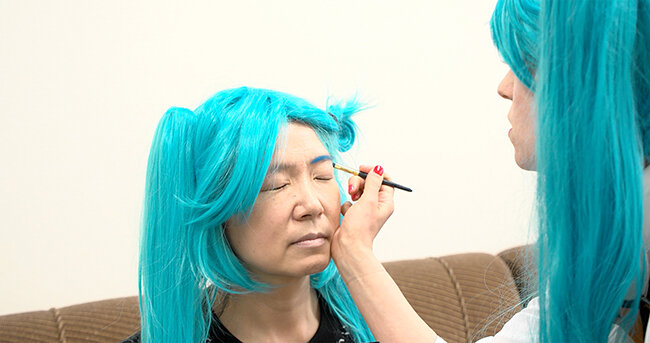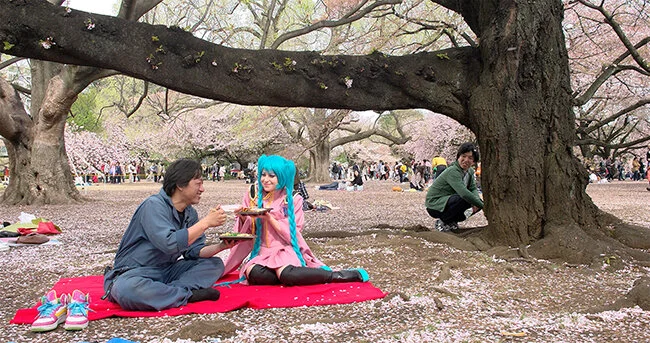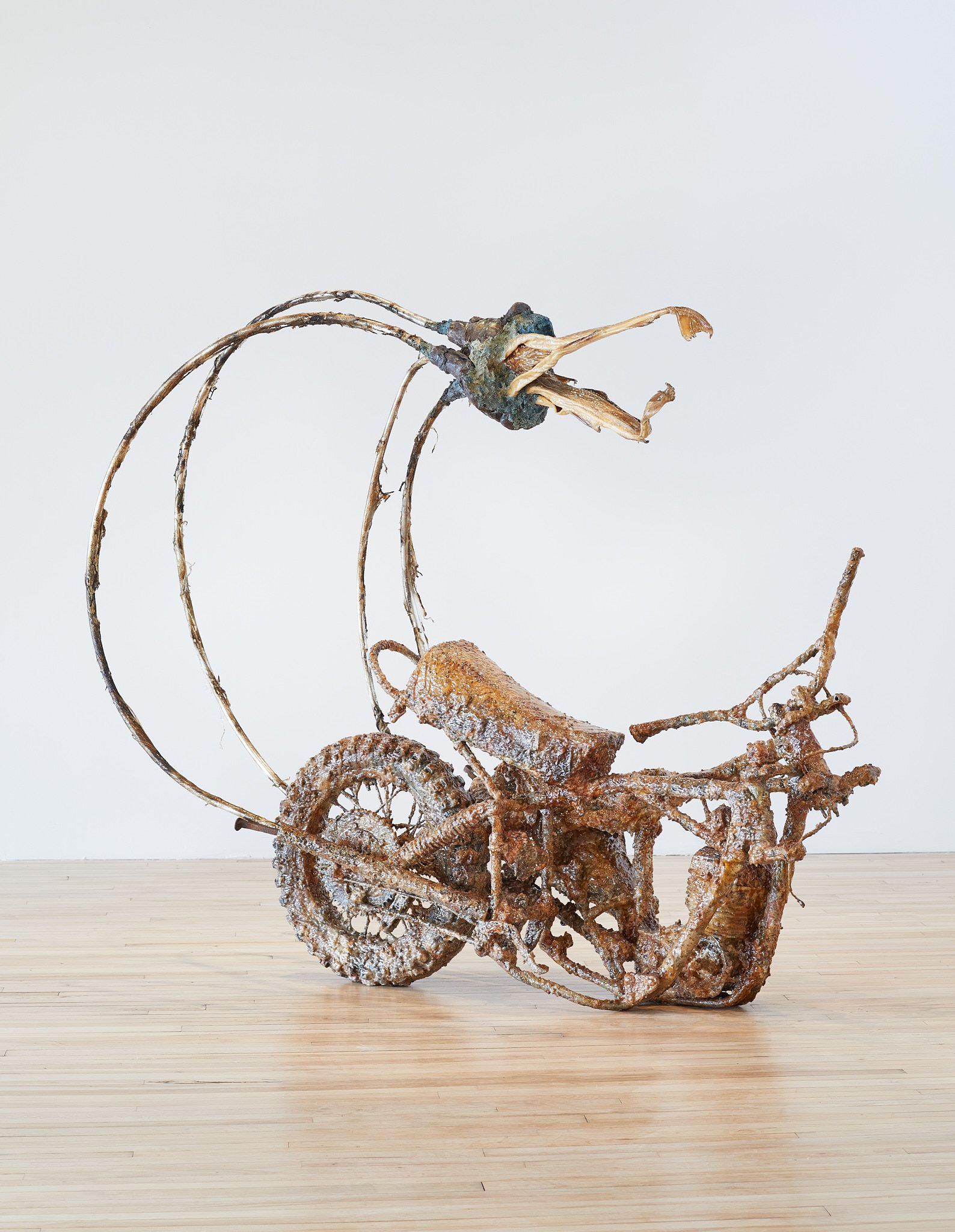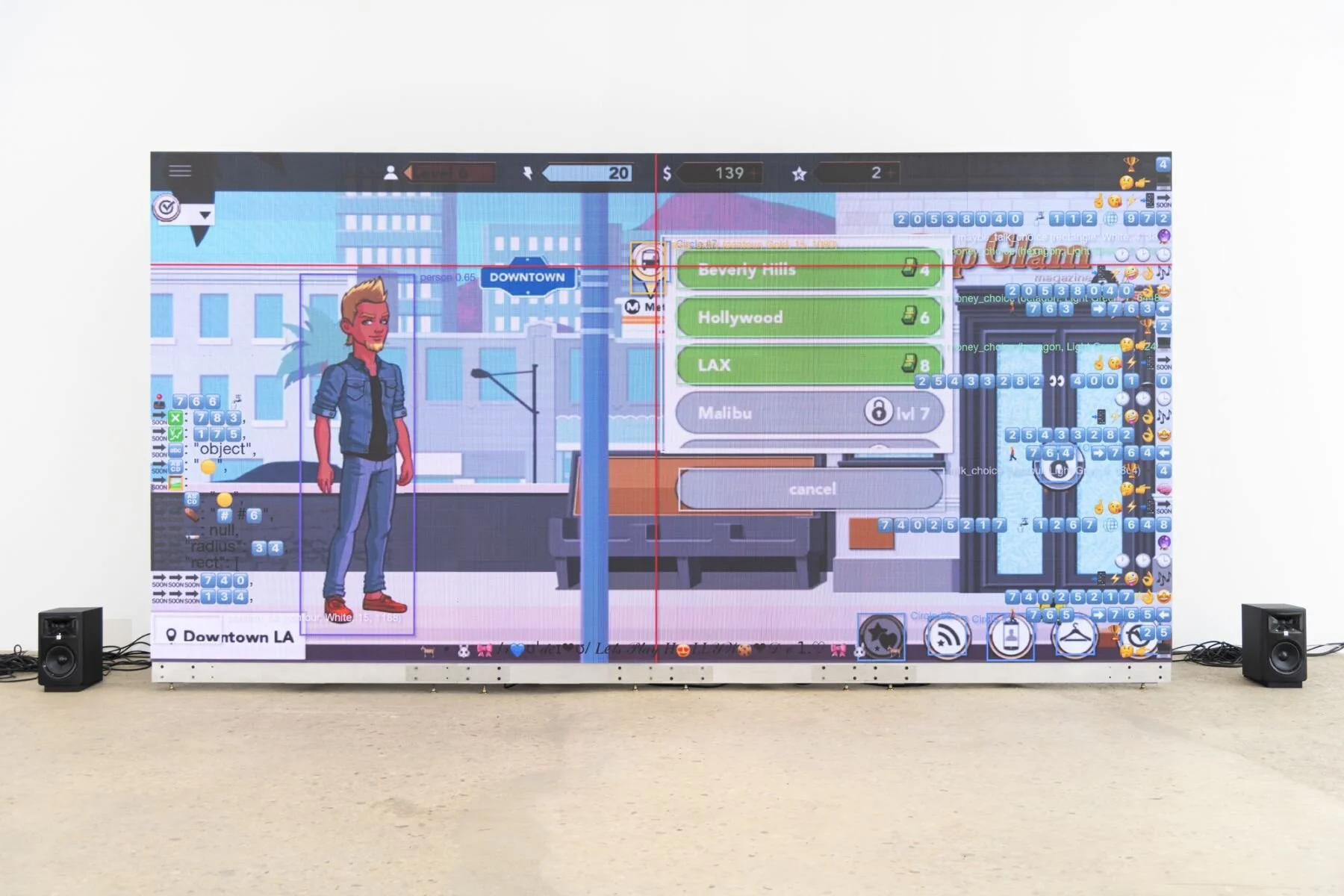The World is Mine: Orbiting a Virtual Star
Still from The World is Mine, courtesy of Mimesis Films.
In Otaku: Japan’s Database Animals, one of the first scholarly works on the subject to be translated into English, cultural theorist Hiroki Azuma associated the appearance of Japan’s otaku communities—groups of like-minded pop culture fans—with the postmodern breakdown of societal grand narratives. Some turned to fiction to find a new kind of meaning; those who preferred this fantasy to reality came to be known as otaku. These substitute narratives themselves broke down when fans and producers both realized that stories didn’t matter. What otaku wanted was the affect—“moé”—generated by fictional characters that could exist outside of grand narratives.
Azuma’s book was published in 2001; six years later, a character was created that would go on to foster one of the largest fan communities in otaku history. 2007 saw Crypton Future Media release the Hatsune Miku add-on for Yamaha’s “Vocaloid” software. Vocaloid is a text-to-speech program that allows a computer to sing by manipulating microtemporal vocal samples according to text, notes, and parameters entered by the user. Voice actress Saki Fujita provided the raw material that, through Vocaloid’s signal processing algorithms, became a new cyborg voice that could sing whatever the user wanted. Crypton designed a character to personify this voice, a teenage girl with long aqua-colored pigtails. Miku became an unprecedented success, and fans got to work writing songs with her voice and making art featuring her image.
Still from The World is Mine, courtesy of Mimesis Films.
Over a decade later, Vocaloid fandom still attracts fans in Japan and abroad. The World is Mine (2017, dir: Ann Oren) follows one such foreign fan on a trip to Tokyo as she interacts with Miku fan communities there. Known simply as M (Ann Oren), she spends practically the entire film in costume as Miku, wearing a long aqua wig and a variety of elaborate outfits. M tries to find meaning and camaraderie as an outsider in this otaku community, but her experience—like the character of Miku—ends up being hollow and artificial.
M’s western face and broken Japanese present her as an obvious outsider; doubly so in scenes featuring her as the only one walking around wearing a costume. Although M isn’t exactly welcomed into Tokyo’s otaku subculture with open arms, nobody in the film calls her out for “cultural appropriation”. Perhaps this is because, as in Azuma’s interpretation, otaku are more concerned with their chosen fantasies than wider reality and its notions of race and culture. A fan is a fan, and that identity takes precedence over any attributes valued by the outside world. Another prospect is that the film is skewed in favor of its non-Japanese actress/director. If M, or the production itself, was criticized for appropriating Japanese culture, such critiques were left out of the film.
Still from The World is Mine, courtesy of Mimesis Films.
For those unfamiliar with Miku, the film tries to explain what exactly she is. One scene features @yukky, a musician who uses Miku’s voice in his work, showing off the Vocaloid software. M, meanwhile, seems more fixated on a Miku music box which plays a version of “Ievan Polkaa”. She winds it up several times, listening to the mechanical tune rather than yukky’s composition, to his visible annoyance. He explains his technique for making Miku sound as “human” as possible, starting with low notes and gradually raising the pitch of her voice throughout the song. This contrasts with another scene in which M attempts to go in the opposite direction and make her own voice sound more artificial. She practices pronunciation in the park with a vocal coach, with M stumbling through her lines while trying to put a cutesy spin on them. She parrots a litany of sing-song phrases with visible discomfort, at one point holding the corners of her mouth up in the most fake smile possible, as the coach says it will help her sound cuter.
One fan who accompanies M on and off throughout the film is @umekiti3396, a middle-aged man who, like yukky, preferred to be credited as his Twitter handle. Umekiti is known within Japan’s Miku fandom for his van that he has plastered, inside and out, with images of Miku. Like M, little is revealed about his background except that he subsidizes these expensive customizations by working as a security guard in a department store. He and M eat bento lunches in the park: “Dining with a Miku under a cherry blossom tree is a dream come true for me.” Later, M alludes to this moment in a conversation with a therapist, concerned that he is attracted to her incarnation of Miku rather than to her as a person. The therapist, more interested in M’s cosplay than anything else, asks her patient for an impromptu Miku makeover. M puts her spare aqua-colored wig on the therapist’s head and helps her apply makeup and fake eyelashes, much to the woman’s delight.
Still from The World is Mine, courtesy of Mimesis Films.
The World is Mine offers viewers a choice from the very start of the film: fantasy or reality. Umekiti pontificates on this, claiming that his love of Miku has firm limits and that he is on the “reality” side of the equation, despite saying this while driving a custom van with a half-dozen LCD monitors mounted to the dash playing her music videos. His disconnection from the real world extends to his obliviousness towards the person sitting in the passenger’s seat. Near the end of the film, as he and M are driving, she asks him to move the large monitor that blocks her view from the windshield, as being able to see the road would ease her carsickness. He says nothing and refuses to touch it, leaving her to quietly choke her vomit back down while he queues up another Miku video on the displays.
Still from The World is Mine, courtesy of Mimesis Films.
The film’s structure, like the communities it follows, has rejected narrativity in favor of affect. The viewer isn’t shown the circumstances behind M’s trip to Japan, and her entry and departure are left unseen. As a character, she has no history; she simply appears in the scene, just like Miku. M drifts from one place to another—costume shops, photo shoots, concerts—without a grand narrative pushing her towards any conclusion. The film is fictionalized but not narrativized: Put another way, it is a perfect microcosm of otaku attitudes as defined by Azuma. The only larger reference is Miku, a character that exists outside of narrativity and whose only story is that of her collective creation by her fans.
During a “live” Miku concert (in which a digital rendering is projected onto a translucent screen on the stage), M has a silent breakdown, looking increasingly dejected as the fans chant Miku’s name and wave their green glowsticks to the rhythm. They aren’t cheering for M, but for the concept that she is trying to represent, a virtual entity that no person can properly imitate. Her costume is imperfect and always will be: She can never reach the digital perfection of the projected idol dancing on the stage in front of her. M is just an imposter, a foreign knock-off of a character who is artificial to begin with. These devoted fans, like umekiti in his Miku van, seem to float through life untethered from any societal grand narratives. They are briefly united by their shared interest, but unable to make any meaningful connections, they inevitably drift apart.
Still from The World is Mine, courtesy of Mimesis Films.
















